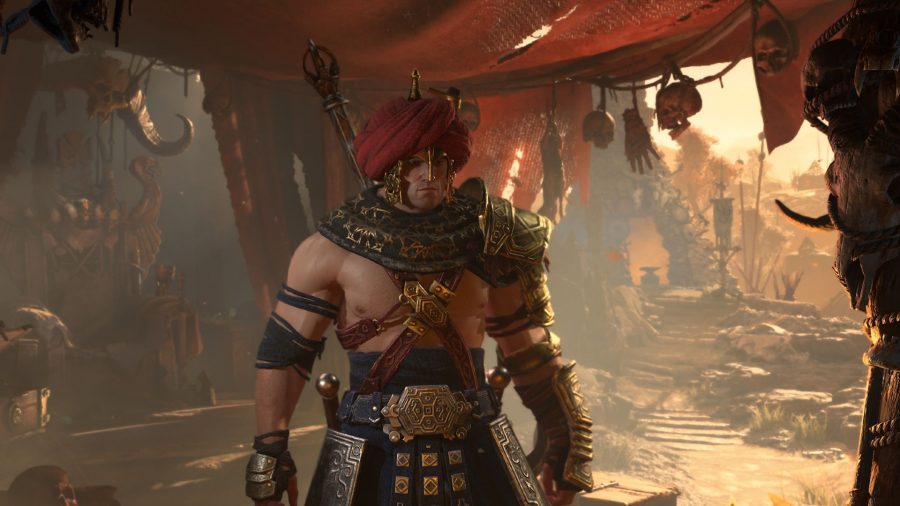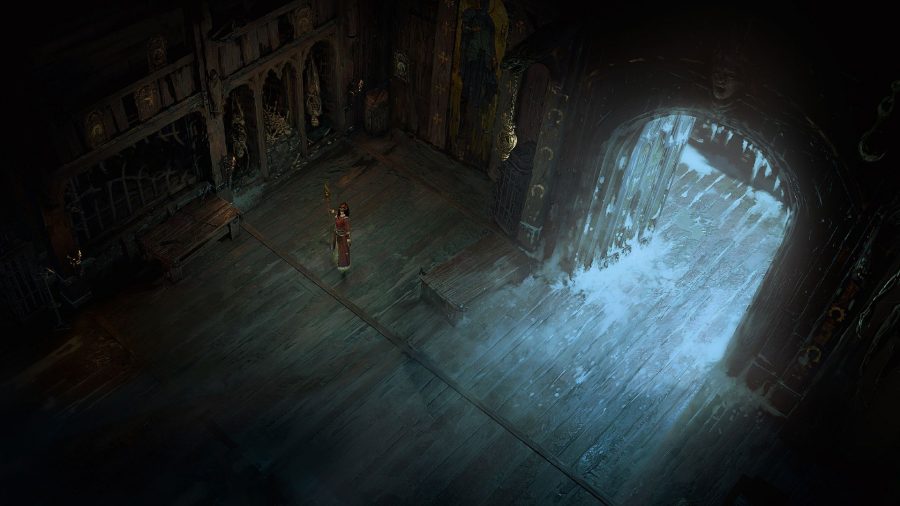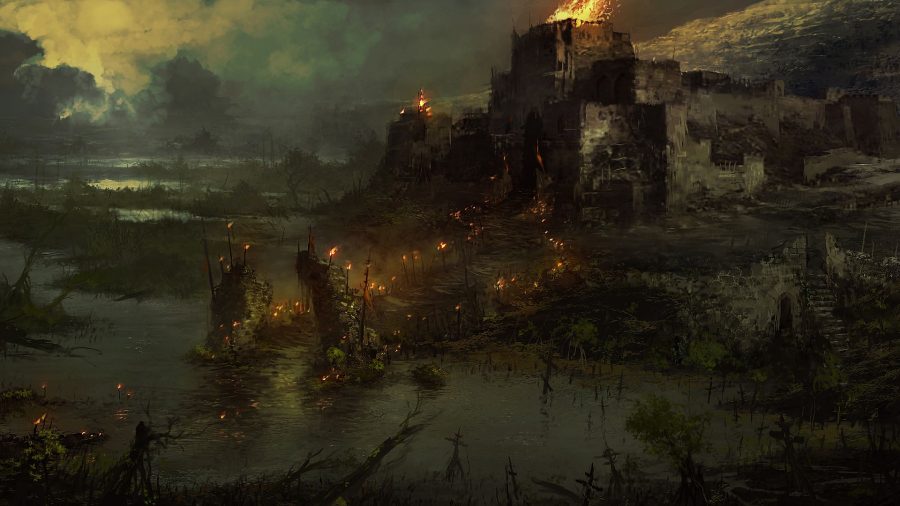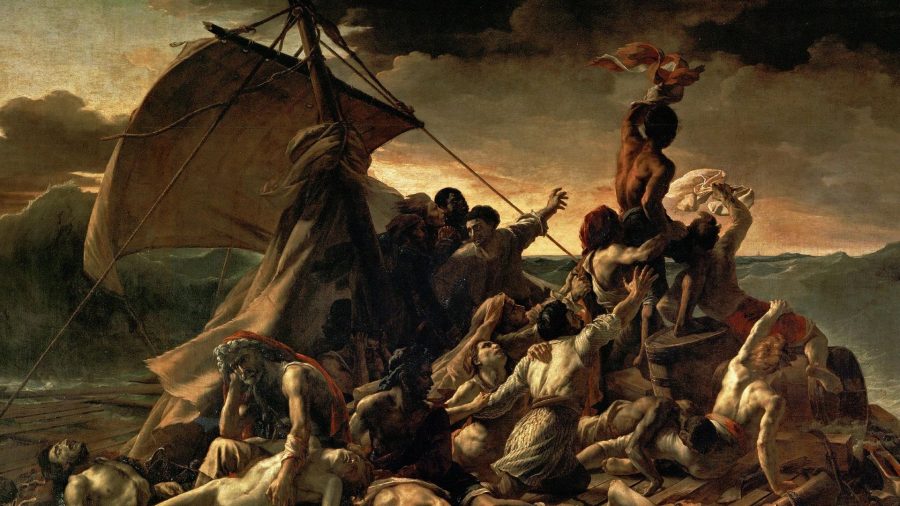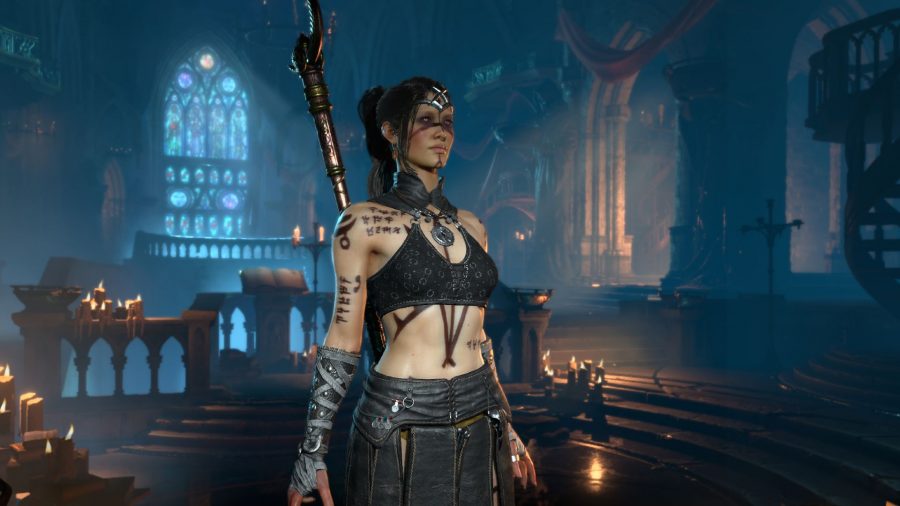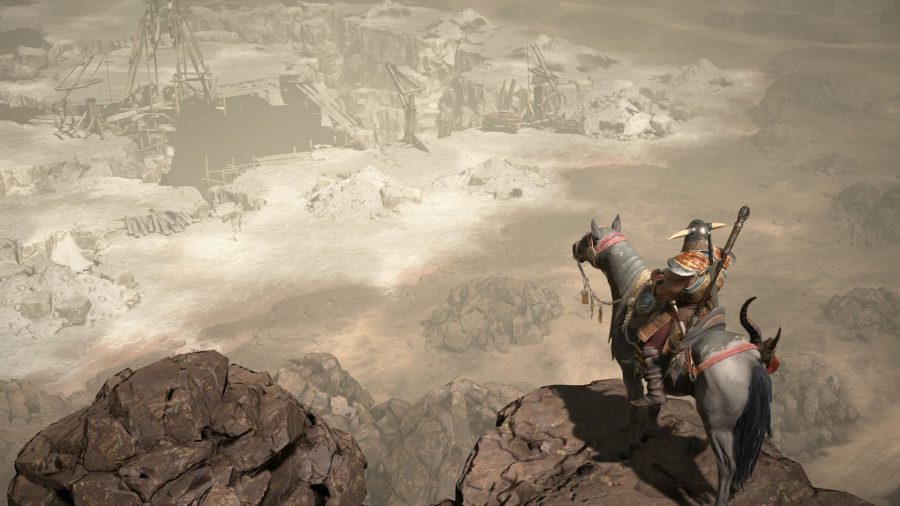Diablo is Blizzard’s darkest series. In the world of Sanctuary, humanity desperately etches out an existence for itself, harangued by demonic invasions and the will of angels. There’s a lot of death, plenty of gore, and a little bit of hope. That’s been the aesthetic blueprint for the series since the first game released back in 1996, and Blizzard isn’t looking to change things up for the upcoming Diablo IV.
Unsurprisingly, Diablo’s eternal war between angels and demons – with humanity suffering somewhere in the middle – is heavily inspired by Renaissance and medieval paintings, as well as works from the Romantic era like Théodore Géricault’s The Raft of the Medusa. These artistic periods feature a mix of dark fantasy and realism that’s central to Diablo IV’s visual identity, and in a recent quarterly update the team behind Diablo IV shared some of the techniques they’re using to realise that art style.
We spoke with Diablo IV’s art director, John Mueller, to learn more about how the team is advancing the series’ iconic look, and the inspirations behind the upcoming ARPG.
PCGN: In the blog post you talk about how everyone said ‘yes’ to new ideas, even if that meant throwing out a bunch of stuff and starting from scratch. What kind of things did you end up scrapping?
John Mueller: We probably threw out a lot of our earliest work, so a lot of the armour and creature designs that we did, and we’ve essentially gone back and redone them all. There was a point after Blizzcon – when Arnaud Kotelnikoff [lead character artist] joined us and we did a lot of work on the shader and material side of our character pipeline – when we just saw the results we were getting and decided that we have to go back. It really felt like there was a big leap in our minds between how things look now and how they looked back in 2019, especially up close.
We now have the option to show things really up close in a way that we really never thought we would when we started this journey. So yeah, there’s been a lot of stuff that we had to go back and not necessarily redesign, but go over a second time.
Does that have anything to do with the physically based rendering techniques that you’re using now?
I think it’s really due to our experience with it. We were coming from Diablo III, which had this hand-painted art style, so it was a completely different pipeline than what we’re doing now. That process of revisiting has been about familiarity and expertise in all of the tools that are available to artists now. There’s also the challenge of trying to retain what makes a Blizzard game look like a Blizzard game, and that was part of the balancing act that we were constantly finding ourselves in.
What are the particular components that make a Blizzard game look like a Blizzard game?
I mean, it’s handcrafted. There’s a feeling that this was made by people. A lot of the tools that are really incredible now also have a lot of procedural aspects to them – they’re very good at rendering photorealism. That was never our goal. Our goal has always been to create art, so it’s important when we have these tools in the hands of artists that we let their artistry come through.
The tools shouldn’t drown out your creativity and your contribution as an artist. I feel like we are striking that balance and hopefully that comes through in the blog. People will decide whether or not we’re doing a good job and I have a lot of respect for that process.
That blend of fantasy and realism, which you find with artists like Frank Frazetta, is really striking. Are there any fantasy artists that you can point to as inspirations?
making a sequel is an opportunity to recast the die
We kind of refer to it as the Old Masters pillar. Frazetta was kind of in that style, his paintings reminded me of old European works – the subject matter was very different and visceral, but the technique and the way that surfaces were treated really did feel like those Old Masters paintings.
It was a great place to begin cultivating an art style and identity for Diablo IV, because if you look at old medieval paintings it’s a lot of angels, demons, and mankind being tortured in the middle. It’s really one of the only things we have from that period to look at and interpret what was going on at the time, and if you take those paintings literally then you have something that feels like Diablo.
There’s a lot of Christian iconography and Middle Eastern influences in the series. What guides the team when they’re drawing on religious or mythological works?
There are two principles we talk about whenever that comes up. Firstly, sanctuary is its own fantasy world, so there’s nothing from our world there. It’s not like our medieval world with a fantasy twist, it really is its own world because of the lore around all of it. But there’s also a groundedness, and if you go back to the early beginnings of Diablo and Diablo II there was always this attempt to make it feel like this is a real place. There’s also high fantasy, but you have to go deep into the dungeons to get into those more high fantasy environments.
On the surface, the world is a medieval one, so that’s how we approached it. We go to Kehjistan, which is where Caldeum is, and it’s all arid deserts. We also go to the Dry Steppes, which is inspired by different regions in northern Asia. And then there’s Scosglen, which is definitely influenced by more European ‘isles’ type environments. For everything we do we gather a lot of reference materials, but we don’t let that limit our vision for what we’re trying to do. We put that Diablo twist on it so you feel like you’re in the world of Sanctuary, and there are going to be a lot of things that you see beyond the grass, rocks, and trees to remind you this is Diablo.
I know you’ve mentioned how this is distinct from the painterly style of Diablo III. I know there were complaints in some quarters that it was too cartoony, and I wondered if this is a reaction to that feedback?
One of the great things about making a sequel is that you really get the opportunity to recast the die a little bit. Technology has changed, times have changed, and dark fantasy is really having a renaissance right now. Diablo is the apex of dark fantasy in the ARPG genre. When Luis Barriga [game director] and I talked about this he didn’t know how dark I wanted to go, and I wasn’t aware how dark he wanted to go. But we realised very quickly that we were actually really aligned on what we felt Diablo IV should look like.
It comes from a lot of places, but it’s definitely a personal thing for me – I’ve got a lot of connections with medieval art, it’s really fundamental for me. My first trip to the Louvre was a super memorable thing in my mind. I can remember standing in front of some of those epic paintings and feeling like this was real – it looked real. If you stand in front of them it’s a really emotional experience, and I will never forget it. At some point I was fortunate enough to be asked, ‘What would you want to do with Diablo?’ And for me, it was a very, very easy answer.
I think I can understand that. I had a similar experience standing in front of The Birth of Venus in the Uffizi Gallery in Florence, and even though you might have seen it hundreds of times in books, you don’t get that sense – that almost spiritual sense – of what it’s like to stand before this massive work of art.
I’ve stood in front of that same painting and you’re right. The painting for me was The Raft of the Medusa, which I saw in The Louvre – you don’t realise how big it is – and it’s this desperate, terrible story. If you look at that painting, it’s all the things that I love about Diablo. There’s a little bit of light, and there’s a little bit of hope off in the distance, but then all of the people in the painting are like, ‘Nah, it’s over, we’re dead’.
Going back to the topic of religious and spiritual iconography. That was all created for a similar purpose, which was to convey a sense of the connection to the divine or supernatural. So I guess it makes sense to use that as reference material since that’s the theme that runs through Diablo.
that painting is everything I love about Diablo
Yeah, and it’s very different from a Tolkien-esque fiction where there are all these races and they all have agendas. I think in Diablo there are really just three factions that have a strong initiative, and everything else is trying to murder you. As a developer, you hope people see what you’re trying to do, and that they feel it through the art and visuals. The team’s very excited about what’s happening. This is a very good time for us, we’re having fun.
Has any of the feedback from the Diablo II: Resurrected beta been helpful for your team?
With Immortal, Resurrected, and IV, they’re all under one roof so there’s a lot of shared philosophies there. Even having a blog is a great example. We love this more open kitchen type of process where we’re making the game, showing things off, and getting feedback. That philosophy will probably continue as we get further in.
Has physically based rendering changed the rules for the isometric camera? Does it affect anything like readability?
It’s really helped with the materials and surfaces. Metals, leather, and fabric all read from the camera pretty well. It’s amazing what your eye picks up when you’re looking at something that has a very realistic set of visual rules. That’s what physically based rendering is – just a set of rules that model the flow of light in the world. You can kind of bend them and break them a little bit, and we do that, but readability and how it looks are always our top priorities.
We’ve talked a bit about the medieval art inspirations, but I’ve got a picture pulled up of the Blood Bishop who looks like a Cronenberg creation. Can you tell me a little bit about that design?
however you identify there’s something there for you
We like to take themes in Diablo, like a blood theme or a bone theme, and combine them with things that are very iconic to Diablo and dark fantasy. So when it came to the Blood Bishop it was fun to combine blood and the religious iconography of a bishop. When you encounter the Blood Bishop in the game everything around it also gives it some context. We really get to have endless amounts of fun with the monsters in Diablo IV, things that feel kind of evil and twisted – it’s a good way to spend the day.
The other character model we saw was the female barbarian. I’m sure you’ve seen that there’s been ‘discourse’ about portrayals of muscly female characters in games, and I wondered if this model, with its really clear musculature, is a reaction to that?
Our goal from the beginning is to make the most inclusive experience we’ve ever made with a Diablo game. That’s a super important pillar for all of our games at Blizzard these days, and I’m happy with the variety that we’ve achieved through the character customisation.
But it’s not just the female barbarian, it’s all of the classes. I feel like we’ve leaned into a lot of different body types and a lot of different personas – so however you identify there’s something there for you.
I’ve got to give a shout out to the technical art team, because there’s so much going on with the armour system and we have hundreds of pieces of armour. Each class has a unique body type, and each class is really distinct from other classes as far as the body type is concerned. Rogues look very different from druids, which also look very different from barbarians. The cloth simulation, the layering of all the different armour components – all of that is a huge technical lift and those folks figured it out.
There’s still no Diablo 4 release date, but we’re hopeful it’ll arrive in 2022. Fortunately, Diablo II: Resurrected will be out soon enough, and you can pre-order it here. We’ve also got a bevy of Diablo 4 information, from classes and skill trees, to how PvP will work.
{“schema”:{“page”:{“content”:{“headline”:”Diablo 4 interview: “Diablo is the apex of dark fantasy in ARPGs””,”type”:”feature”,”category”:”diablo-4″},”user”:{“loginstatus”:false},”game”:{“publisher”:”Activision Blizzard”,”genre”:”RPG”,”title”:”Diablo 4″,”genres”:[“RPG”]}}}}


